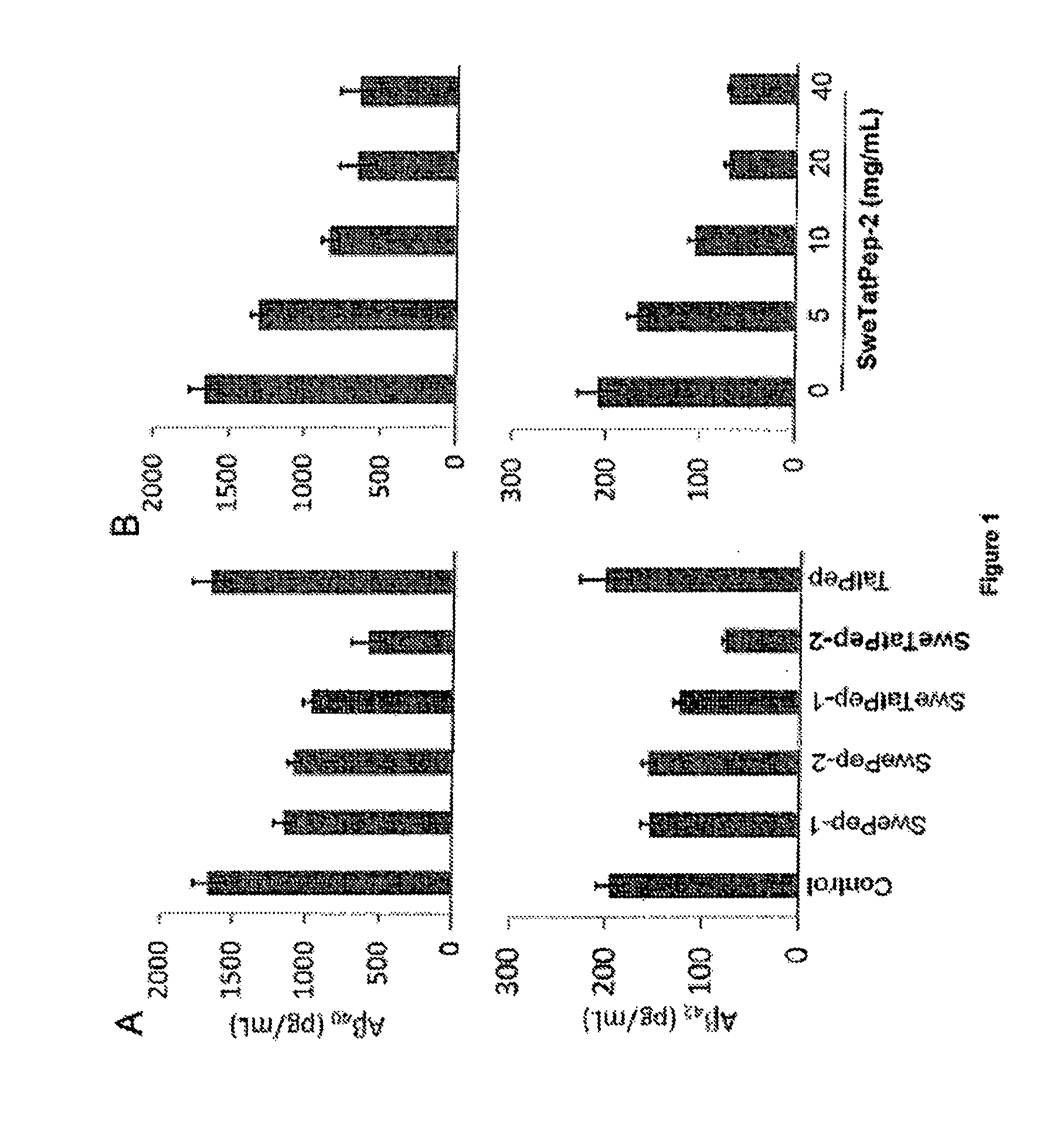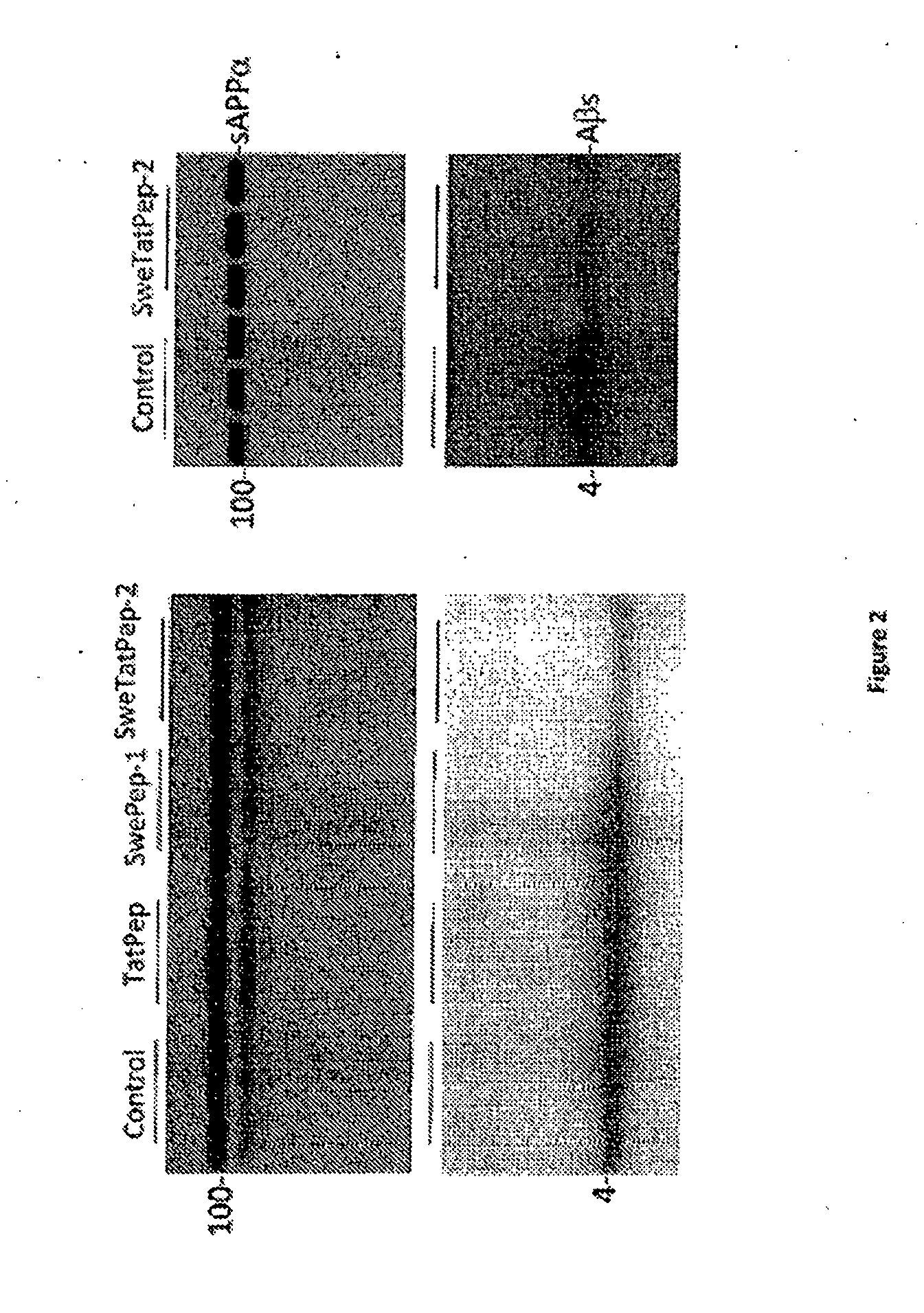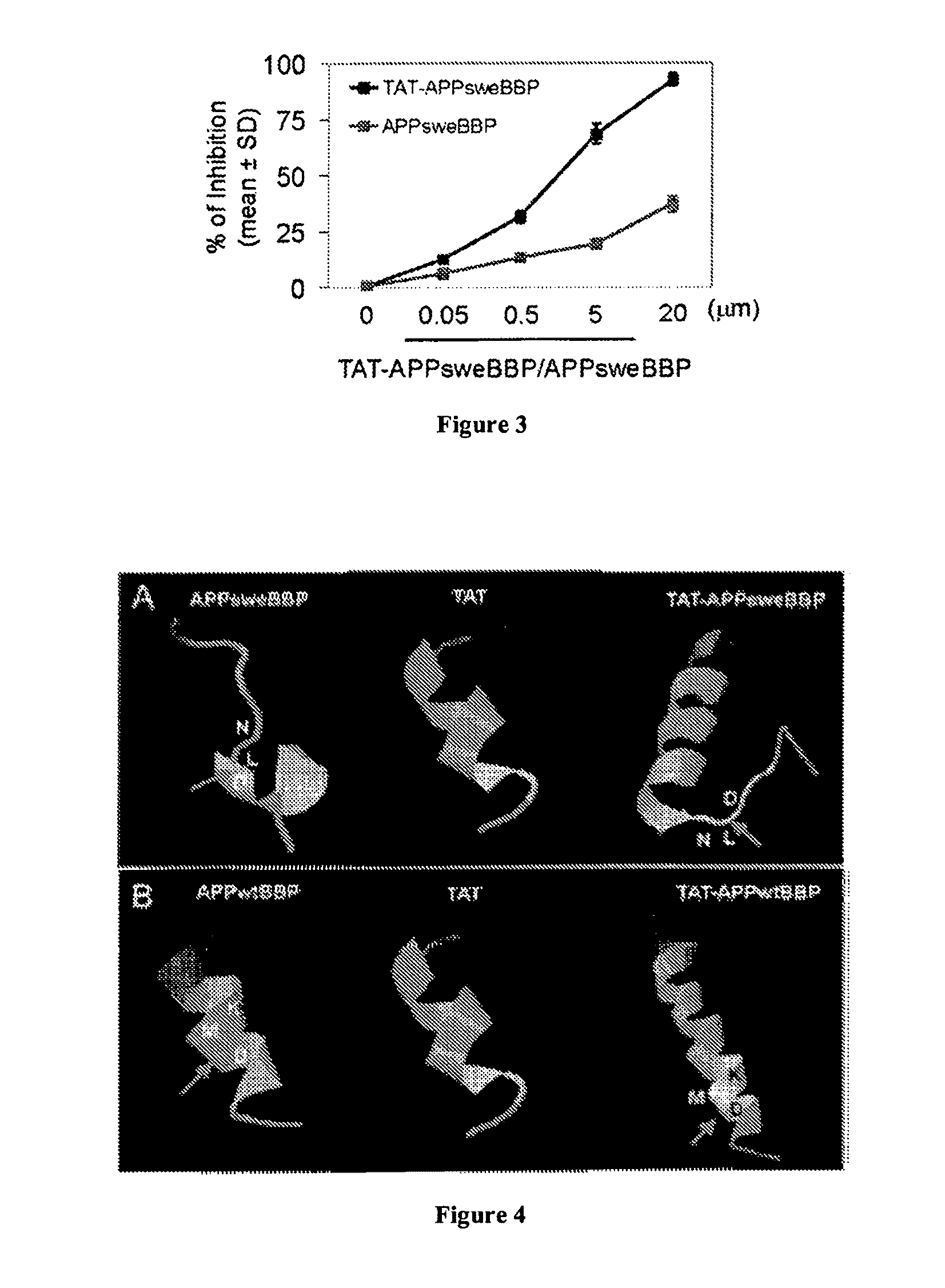AMYLOID Precursor Protein (APP) Based β-Secretase Inhibitor Peptides, and Methods of Use
- Summary
- Abstract
- Description
- Claims
- Application Information
AI Technical Summary
Benefits of technology
Problems solved by technology
Method used
Image
Examples
example 1
Reduction of Aβ in Chinese Hamster Ovary (CHO) Cells
[0131]To examine the effects of various Swedish Tat fusion peptides on Aβ production, human wild-type amyloid precursor protein (APP) is overexpressed in Chinese hamster ovary cells (hereinafter referred to as CHO / APPwt cells), and the cells are treated with either PBS control (Phosphate buffered saline); Swedish peptide-1 (SwePep-1), IKTEEISEVNLDAEFR (also referred herein as “APPsweBBP1”) (SEQ ID NO: 5); Swedish peptide-2 (SwePep-2) (also referred herein as “APPsweBBP”), EISEVNLDAEFR (SEQ ID NO: 1); Swedish Tat fusion peptide-1 (SweTatPep-1), YGRKKRRQRRRIKTEEISEVNLDAEFR (also referred herein as “APPsweBBP / TTD1”) (SEQ ID NO: 6); or Swedish Tat fusion peptide-2 (SweTatPep-2) (also referred herein as “APPsweBBP / TTD2” and “TAT-APPsweBBP”), YGRKKRRQRRREISEVNLDAEFR (SEQ ID NO: 3). APPsweBBP is a truncated fragment of APPswe spanning 12 amino acid residues (Glu665-Arg676). TAT, an 11-amino acid-residue protein-transduction domain derived...
example 2
Enhanced Reduction of Aβ in Chinese Hamster Ovary (CHO) Cells by Human Swedish Mutant APP BACE1 Binding Peptides Fused to a Tat Protein Transduction Domain
[0133]To further examine the ability of the Swedish mutant APP BACE1 binding peptide / Tat fusion peptides to decrease Aβ production, CHO cells overexpressing either human wild-type APP (CHO / APPwt cells) or Swedish mutant APP (hereinafter referred to as “CHO / APPswe cells”) are treated with a variety of APP-based BACE1 inhibitor peptides, as shown in Table 1 and Table 2. Aβ production is determined using ELISA. The APPsweBBP / TTD2 peptide elicits the most effective decrease in Aβ production compared to the other peptides, reducing Aβ40 by 60-70%, Aβ42 by 50-60% and increasing sAPPα by 30-40% in both CHO / APPswe cells (Table 1) and CHO / APPwt cells (Table 2).
TABLE 1CHO cells over-expressing human Swedish mutant APP (CHO / APPswe)were treated with APPsweBBP / TTD2 peptides or a range of controlpeptides as indicated at 20 μg / mL for 24 hours fo...
example 3
TAT-APPsweBBP Binds to and Competitively Inhibits BACE1 Activity
[0134]As a required enzyme for the generation of neurotoxic Aβ from APP, BACE1 is well established as an important mediator of AD β-amyloid pathology. As such, it has become an important target for new disease modifying therapeutics. However, since BACE1 also has important physiological roles, abolishment of the enzyme or its activity may lead to deleterious side effects as evidenced by numerous failed clinical trials discussed previously. Thus, it was endeavored to instead find an alternative substrate for BACE1 that does not lead to pathological amyloidosis. Since previous studies have established a close relationship between α-helix structure and peptide-protein (or protein-protein) interactions (Azzarito, 2013; Rao et al., 2013), several APP based peptides were synthesized that might serve as a preferable substrate for BACE1. Importantly, these peptides were free of the Aβ-containing segment and, thus, cannot be amy...
PUM
 Login to View More
Login to View More Abstract
Description
Claims
Application Information
 Login to View More
Login to View More - R&D
- Intellectual Property
- Life Sciences
- Materials
- Tech Scout
- Unparalleled Data Quality
- Higher Quality Content
- 60% Fewer Hallucinations
Browse by: Latest US Patents, China's latest patents, Technical Efficacy Thesaurus, Application Domain, Technology Topic, Popular Technical Reports.
© 2025 PatSnap. All rights reserved.Legal|Privacy policy|Modern Slavery Act Transparency Statement|Sitemap|About US| Contact US: help@patsnap.com



